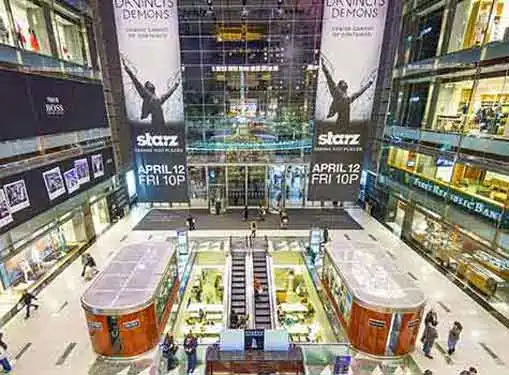Small Business Marketing News
Shopping Malls Evolving Beyond Traditional Retail To Market Lifestyles
Written by Tim Morral
Published: 4/16/2015
Faced with declining traffic, mid-tier shopping malls are being remarketed as lifestyle centers to attract new generations of experiential consumers.
Chances are that when you were a teenager, the shopping mall was the place to be. But these days, malls aren't faring so well.
With the heyday of the American shopping mall in the rearview mirror, mid-tier malls are struggling to recover from declining foot traffic and vacant stores--and one of the ways they're doing it is by remarketing themselves as experiential lifestyle centers.

The State of the Shopping Mall in 2015
Not surprisingly, shopping malls are far from a growth industry. In fact, most shopping malls in the U.S. are in a state of decline as anchor brands close their stores and consumers increasingly opt to shop from their smartphones and tablet devices.
According to recent data from Green Street Advisors, since 2006, no major malls have been built in the U.S. and 25 have closed their doors. Another 60 malls are currently hanging on by a thread.
Last year, 15% of U.S. shopping malls were 10 to 40% vacant--double the percentage of malls that were 10 to 40% vacant in 2006. Over the next 10 years, it's forecasted that 15% of the nation's malls will be converted to non-retail space.
"The selling point of malls, when they were originally built and when they started to grow in the '60s and '70s, was a volume thing: 'Come to the mall because we've got more retailers than anyone else in town. It's one stop, 150 retailers.' That's not as big of a selling point anymore," Christopher Zahas, managing principal at Leland Consulting Group told the American Marketing Association.
Turning It Around with Lifestyle Marketing
In an effort to reverse current trends, many malls are beginning to market experiences that go beyond traditional retail categories. From the addition of entertainment and dining venues to the creation of sophisticated omni-channel shopping opportunities, malls are attempting to redefine the way consumers shop.
In some instance, malls are applying marketing basics to develop lifestyle center models that combine residential living, offices, shops, restaurants and entertainment venues into a single consumer experience. Designed to function as mixed-use real estate, these centers provide convenience for consumers who are no longer captivated by the traditional mall concept.
For small businesses, lifestyle centers and the experiential remarketing of malls present opportunities to reach consumers with an updated brick-and-mortar approach. But it comes with a catch: small retailers need to align with consumers' needs and deliver omni-channel shopping experiences to have any chance of success in today's rapidly evolving mall environment.
Share this article
About Our Small Business News
Our journalists cover all aspects of what entrepreneurs want and need to know. Our perspective is all about giving you news you can use to start and grow your business.
Additional Resources for Entrepreneurs
